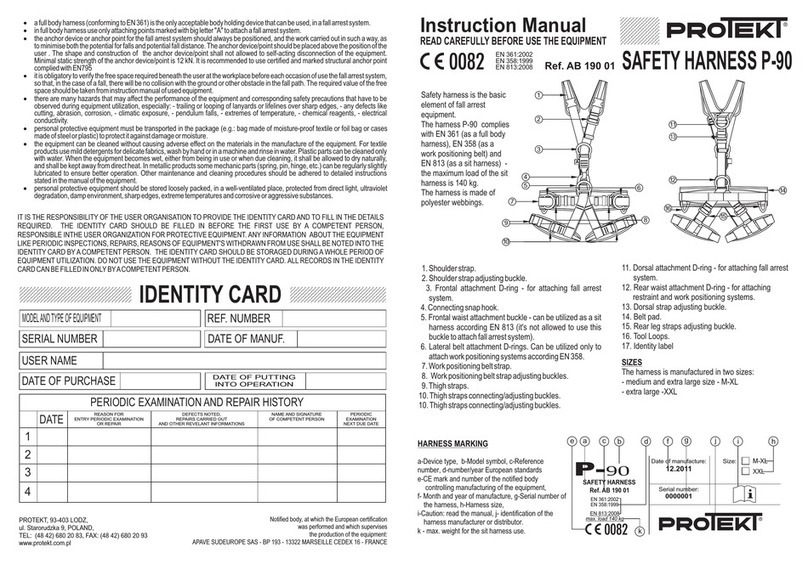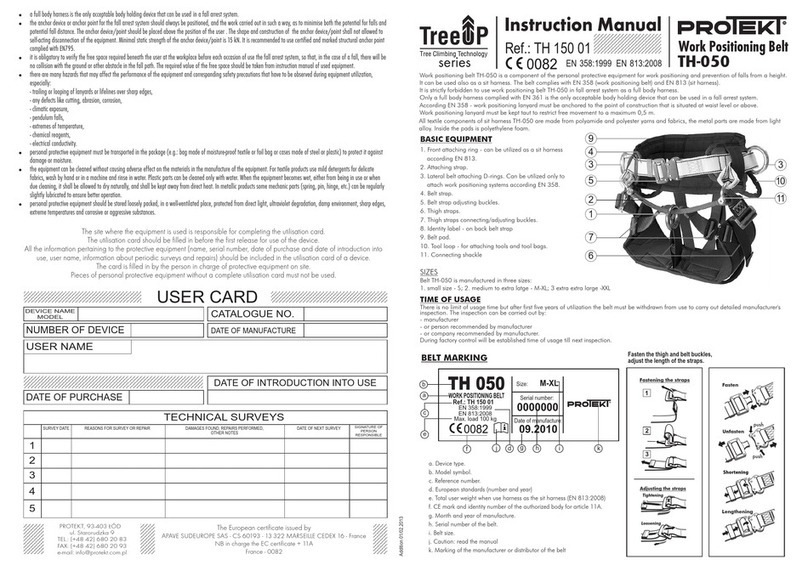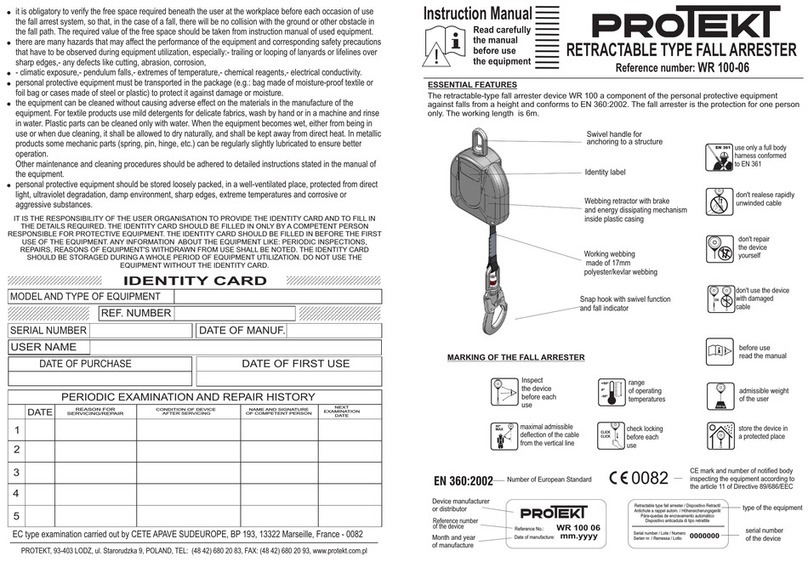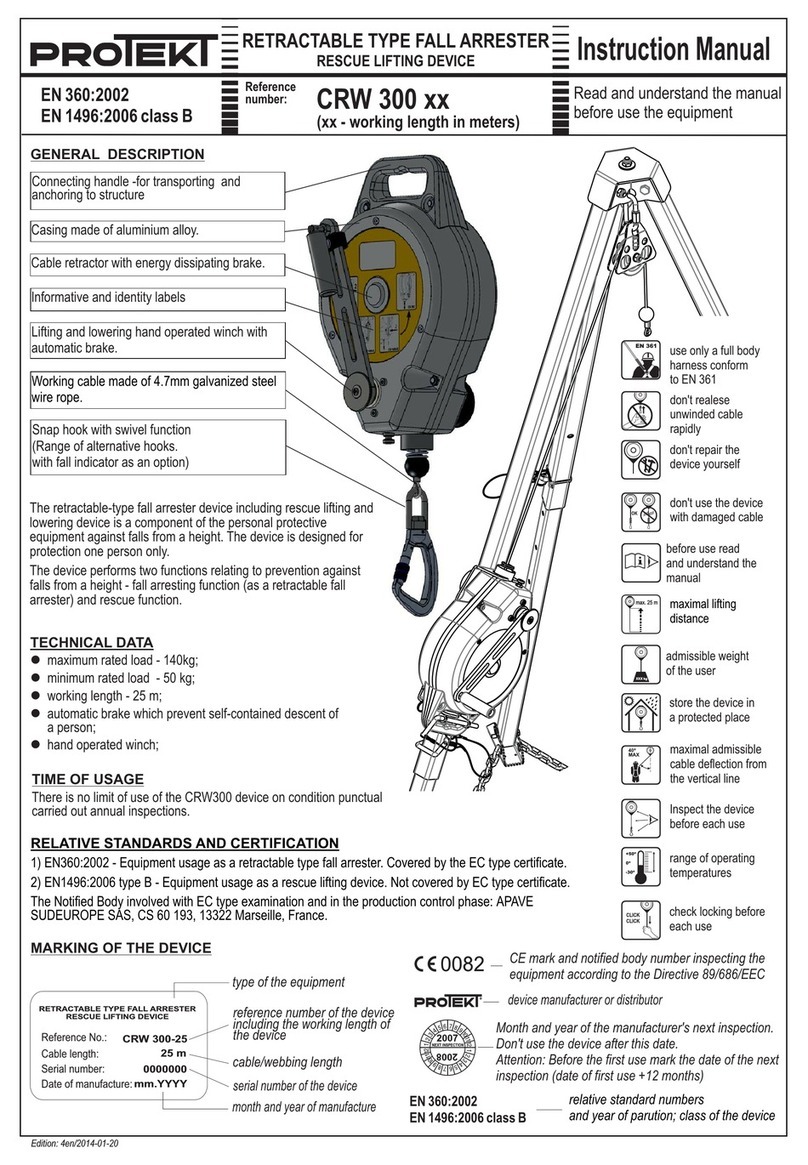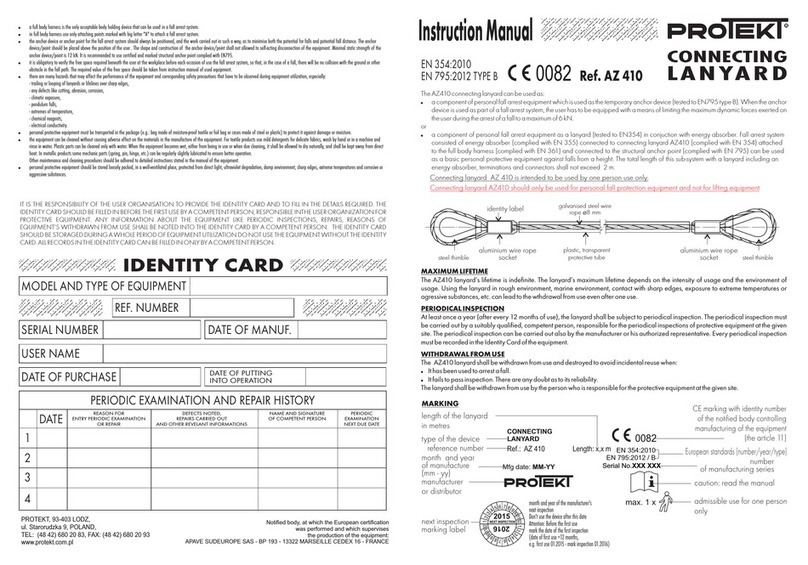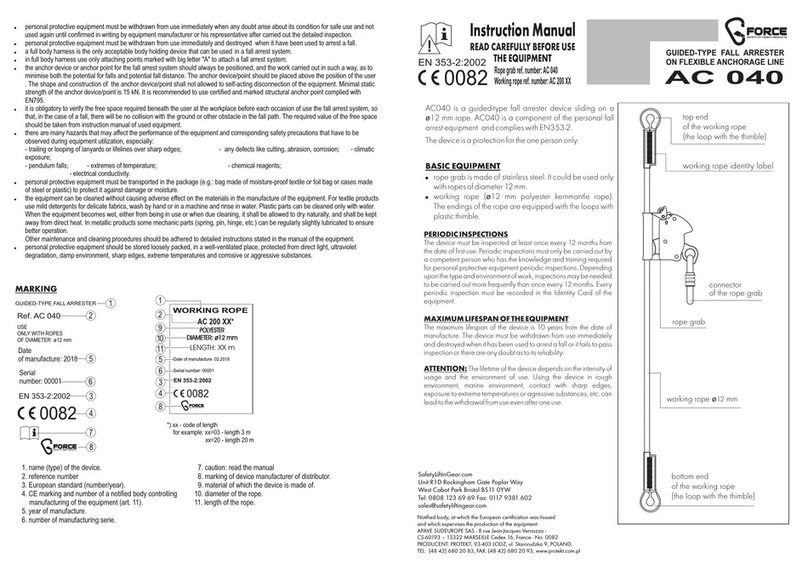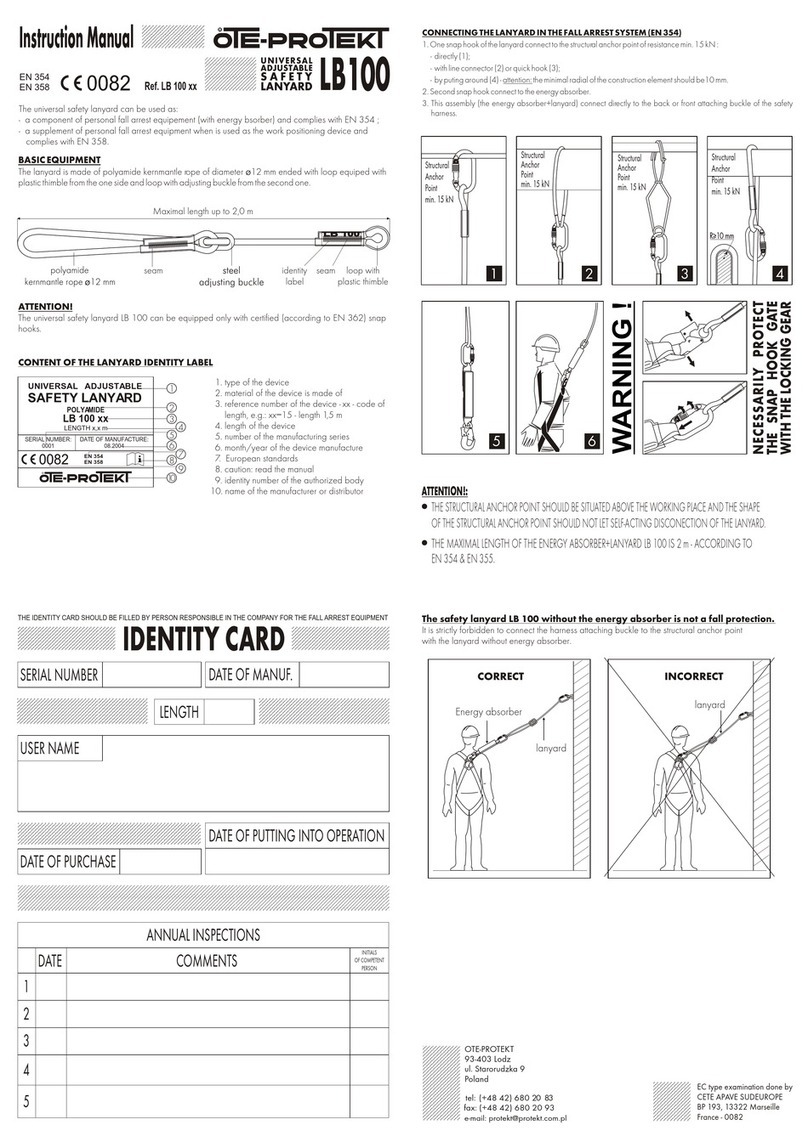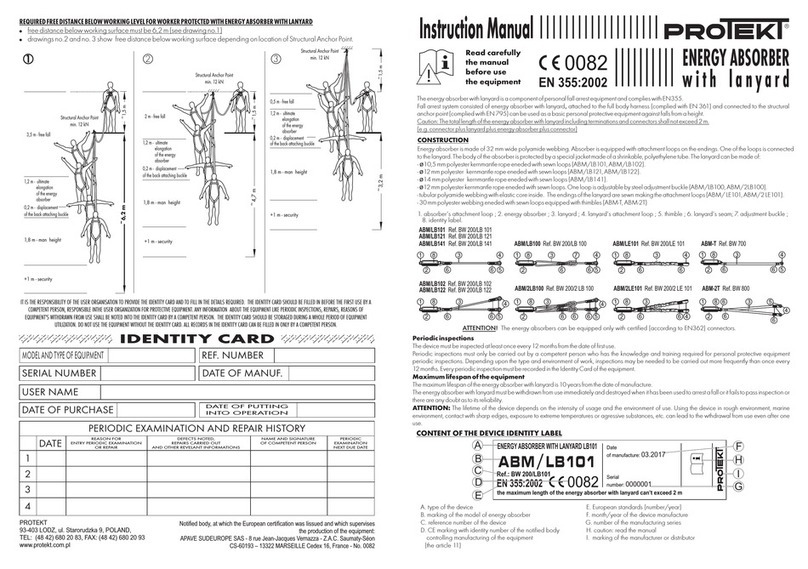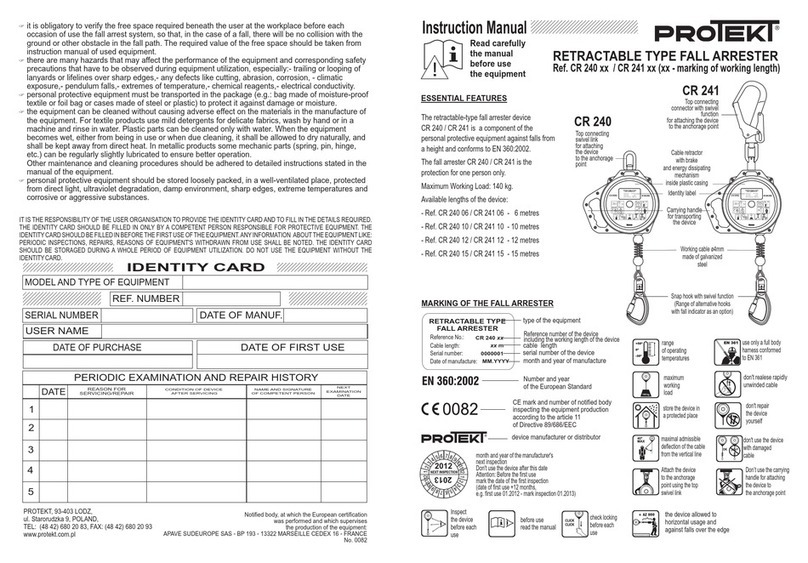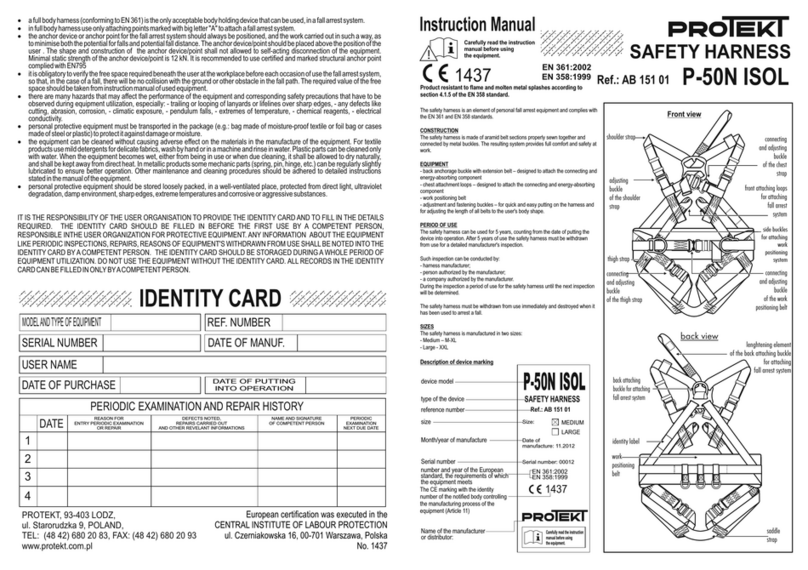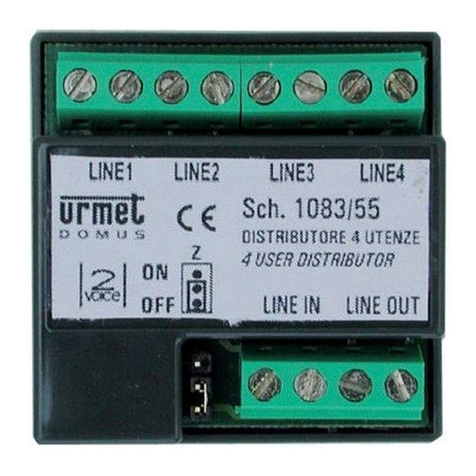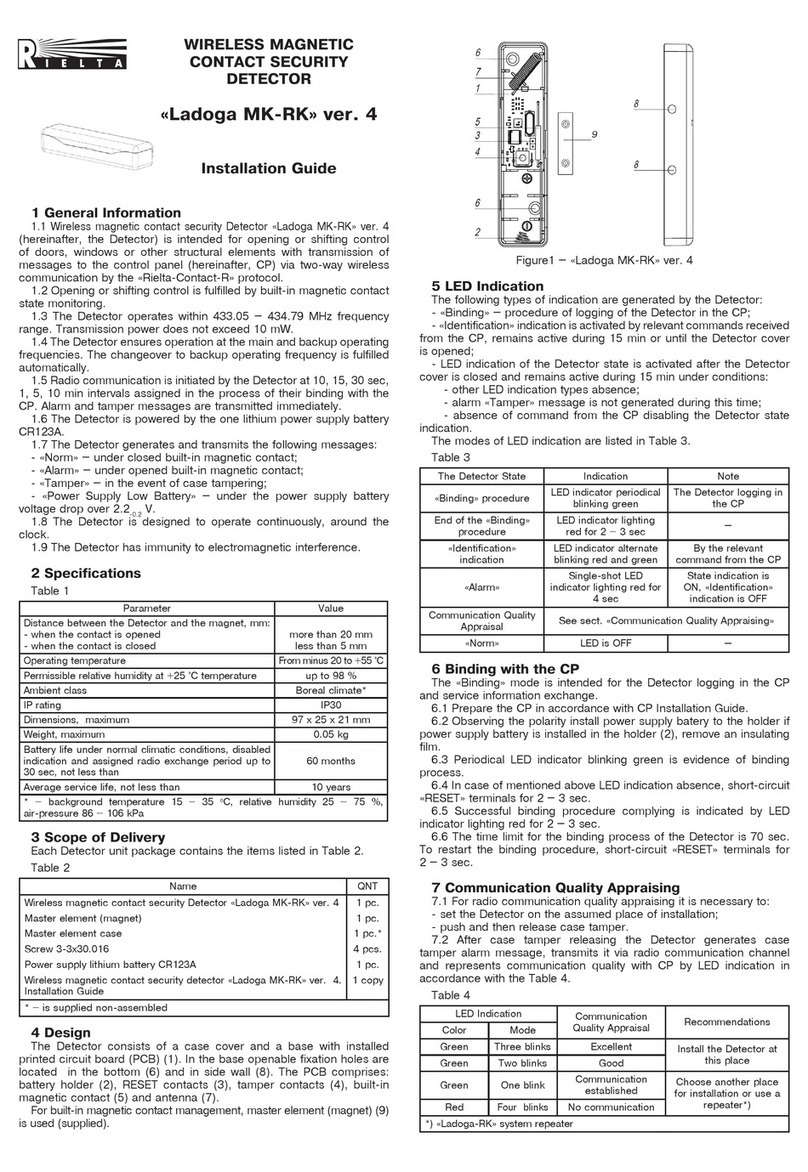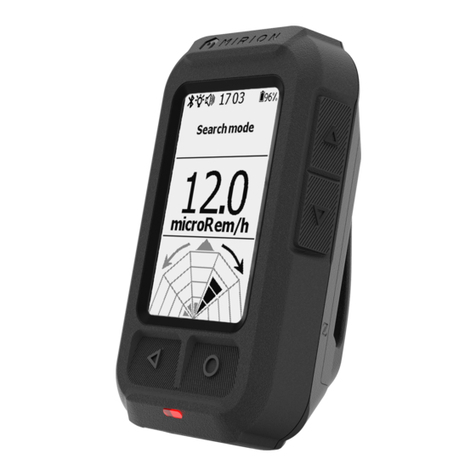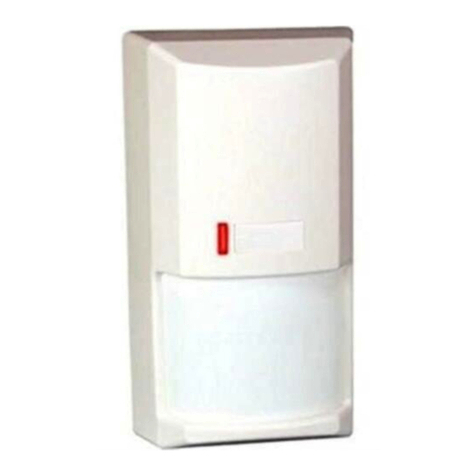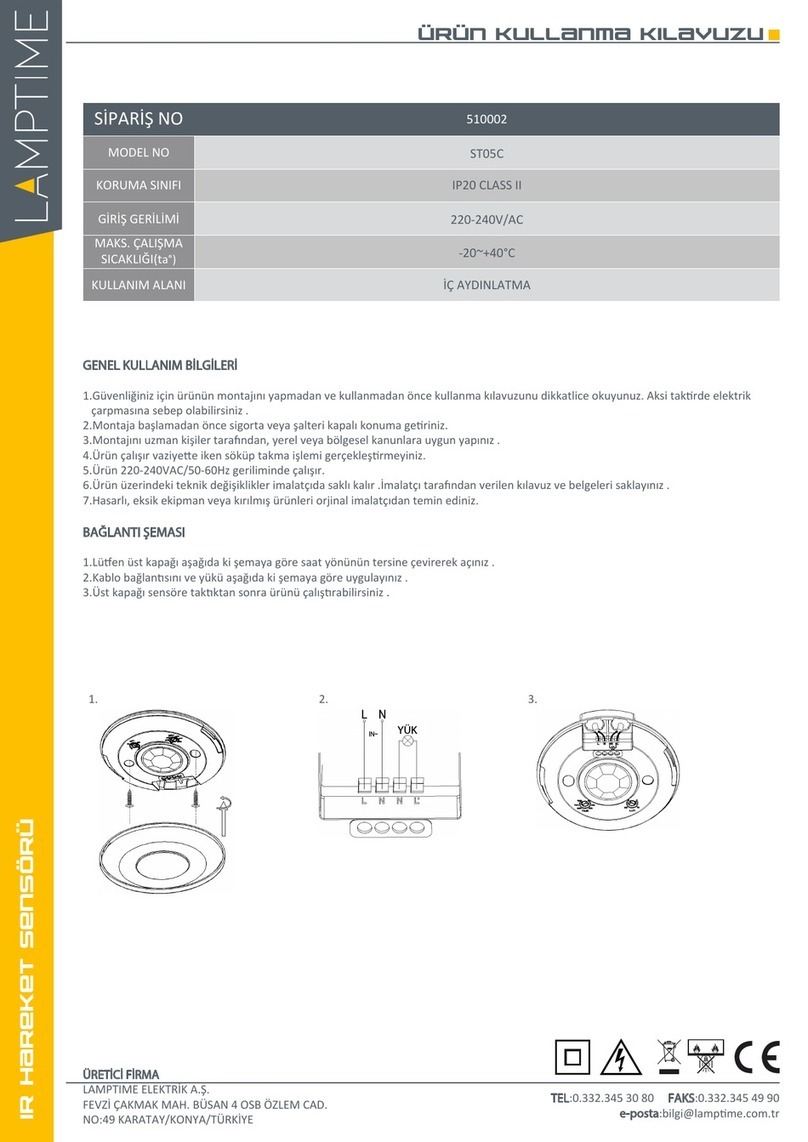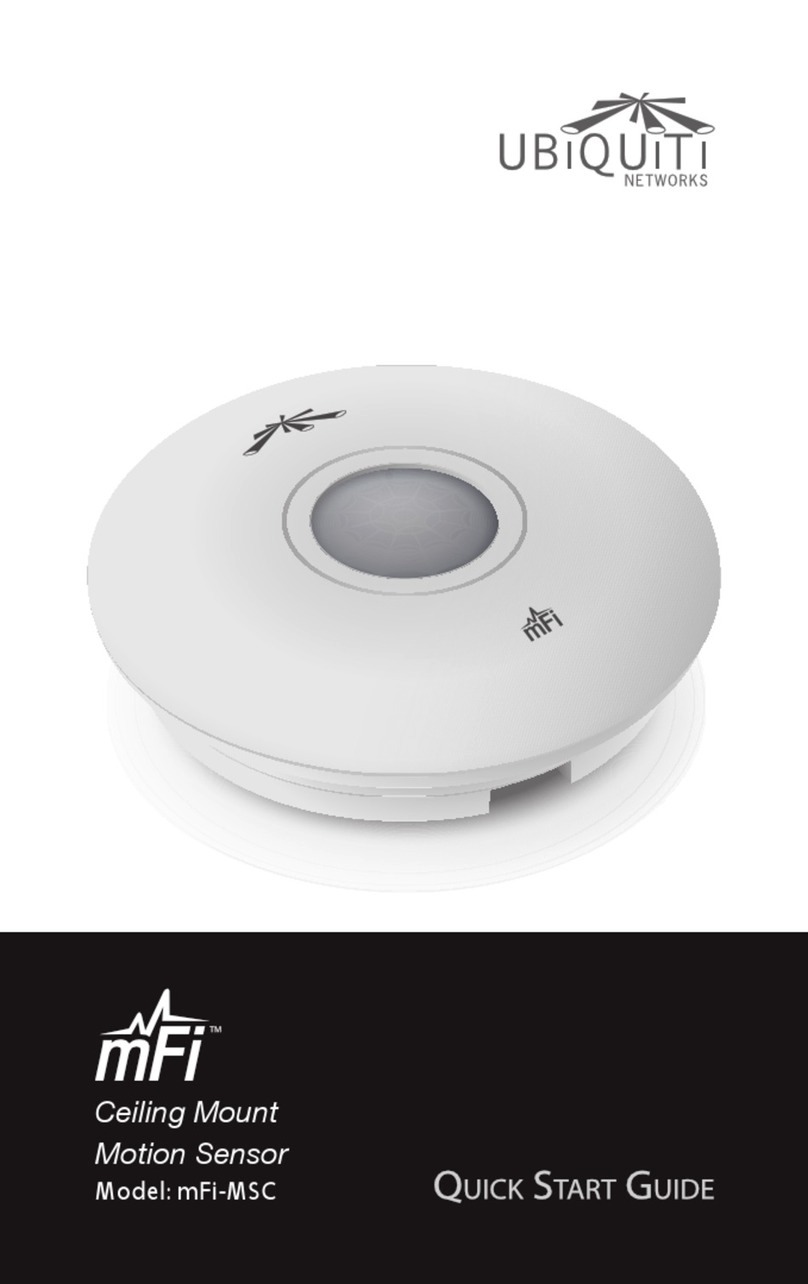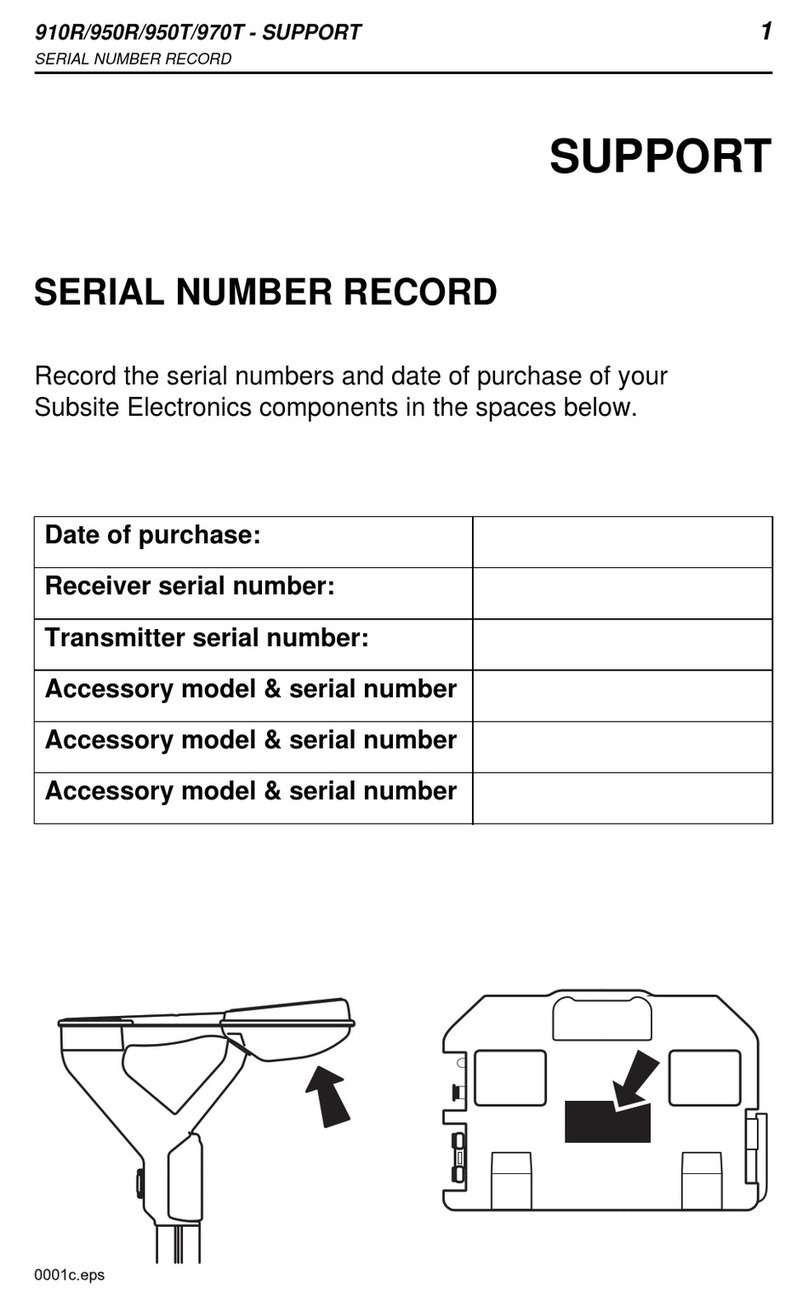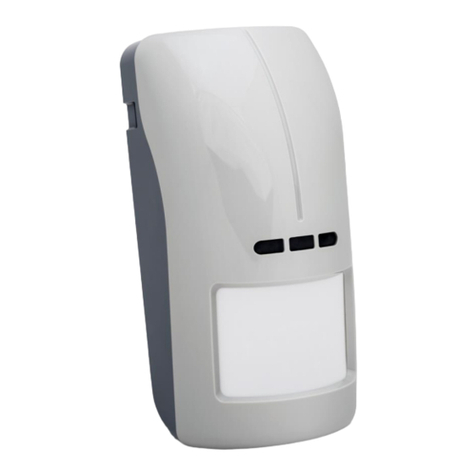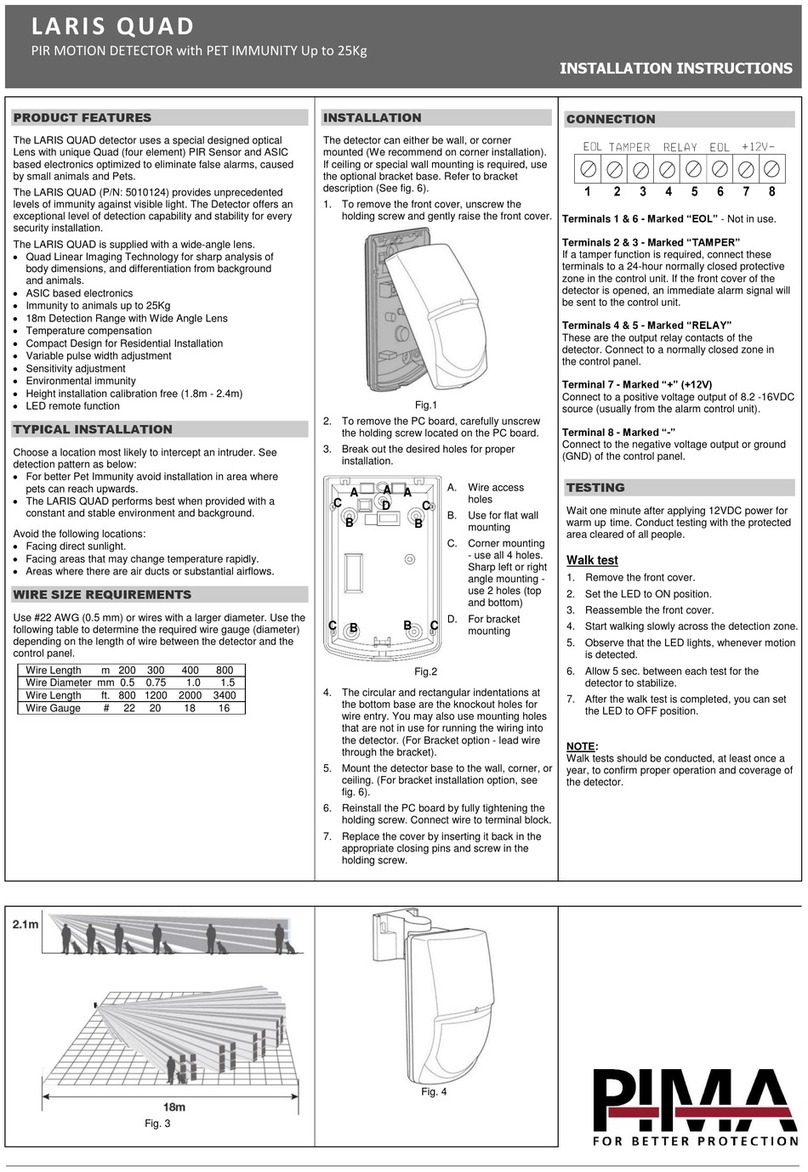USING THE RESCUE LIFTING SLING AT 300 AS A CONNECTING ELEMENT
1
Use a harness with two
front attaching
buckles
Attach two snap hooks
of the lower attachig points
of the rescue lifting sling
to the harness front buckles
(each one to the different buckle)
2 3
Attach
the snap hook
of the upper
attachig point
of the rescue
lifting sling to
a energy
absorber
or rescue
lifting
device.
The structural
anchor point
should be
situated
above
a working
place
and have
static
resistance
at least
12 kN
A B C D
This
full assembly
connect
to a structural
anchor point.
FORBIDDEN FORBIDDEN FORBIDDEN FORBIDDEN
FUNDAMENTAL RULES FOR USING PERSONAL PROTECTIVE EQUIPMENT
!
!personal protective equipment cannot be used by people whose health condition may influence their safety during everyday use or emergency
procedures.
!there must be a rescue operation plan which can be used whenever needed.
!it is forbidden to perform any modifications of the equipment without the written consent of the manufacturer.
!any repairs of the equipment may be performed only by its manufacturer or an authorised representative of the manufacturer.
!personal protective equipment must be used in conformity with its operational purpose.
!personal protective equipment is considered personal equipment and should be used by a single person only.
!make sure that all elements of the equipment that constitute the fall prevention system are properly mated prior to use. Perform periodical inspections
of connections and mating of equipment in order to avoid unintentional loosening or disconnecting.
!it is forbidden to use protective equipment if one of its elements is hampered by another during operation.
!all parts of the fall prevention equipment must be in accordance with appropriate regulations and equipment operational instructions and binding
standards:
- EN 361 for full body harnesses
- EN 353-1, EN 353-2, EN 354, EN 355, EN 360, EN 362 for fall prevention systems
- EN 795 for equipment anchor points (permanent anchor points)
- EN 358 for work positioning systems
!carry out a careful inspection of personal protective equipment prior to each separate use in order to check its condition and operation. Inspections
must be performed by the user.
!such inspections should check all equipment elements with particular attention paid to: any defects, excessive wear, corrosion, points of tearing, cuts
and improper operation. Particular attention must also be paid to each individual device:
- full body harnesses and work positioning belts: buckles, adjustment elements, fastening points (snap hooks), slings, seams, loops;
- energy absorbers: hitch loops, slings, seams, body and connectors;
- lanyards and textile guides: lanyards, thimbles, connectors, adjustment elements, plaits;
- lanyards and steel guides: lanyards, wires, clamps, loops, thimbles, connectors, adjustment elements;
- retractable type fall arresters: lanyards or slings, correct operation of winding mechanism and locking mechanism, body, shock-absorber,
connectors;
- guided type fall arresters: device body and its correct movement along the guide, operation of locking mechanism, rollers, bolts and rivets,
connectors, safety shock-absorber;
- connectors (snap hooks): load-bearing body, riveting, main catch, operation of locking mechanism.
!personal protective equipment must be withdrawn from use and undergo a complete periodical inspection at least once a year (after 12 months of
use). Periodical inspection must be carried out by a qualified person responsible for periodical inspections of safety equipment in a given place of
work. Periodical inspections must be also carried out by the equipment manufacturer or an authorised representative of the manufacturer. Such an
inspection should check all equipment elements with particular attention paid to: any defects, excessive wear, corrosion, points of tearing, cuts and
improper operation (see the previous point).
!If protective equipment has a complex structure, for example retractable type fall arresters, periodical inspections should be carried out only by the
equipment manufacturer or its authorised representative. The date of the subsequent inspection shall be specified after the periodical inspection has
been completed.
!regular periodical inspections are essential in terms of equipment condition and safety of users only fully operational equipment is able to provide
safety.
!make sure that all labels on protective equipment (elements of this equipment) are legible while performing a periodical inspection.
!all information concerning protective equipment (name, serial number, date of purchase and date of first operation, user name, information
concerning repairs and inspections and withdrawal from use) must be included in the Operation Sheet for a particular device. The factory where
equipment is stored is responsible for making entries in the Operation Sheet. The Sheet should be completed by the person responsible for safety
equipment in a given place of work. Equipment without a properly completed Operation Sheet cannot be used.
!if equipment is exported to other countries, the provider must equip it with operational and maintenance instructions as well as information concerning
periodical inspections and repairs in the language of the country where the equipment is going to be used.
!personal protective equipment must be immediately withdrawn from use if there are any doubts concerning its condition or operational correctness.
Equipment can be reused after it has undergone a complete inspection carried out by the manufacturer and written authorisation for reuse has been
issued.
!if personal protective equipment was used to prevent a fall, it must be withdrawn from use and physically destroyed.
!a full body harness in accordance with EN 361 is the only accepted device for keeping a body in the personal protective equipment against falls from
a height.
!fall arresting systems can be connected only to full body harness fastening points (buckles, loops) marked with the capital letter “A”.
personal protective equipment should be used only by people trained in operating it.
ATTENTION: Make sure that connections between each separate fastening element are stable prior to commencing
work and while working. Connectors must be closed and protected with a mechanism which prevents
them from accidental opening.
IT IS FORBIDDEN TO USE THE SAFETY LANYARD FOR APPLICATIONS OTHER THAN THOSE SPECIFIED IN
THE OPERATIONAL INSTRUCTION
NOTES: - In determining the space under the workplace required to arrest the fall, consider the length of lanyard as an additional element that extends the
distance for arresting a fall.
- The total length of the lanyard connected to an energy absorber compliant with EN 355 and snap hooks and fasteners shall not exceed 2 m.
- The user should minimise the amount of slack in the sling near a fall hazard.
- The user must rule out any risk of the situation (e.g. wrapping the sling around neck) that during use ar arresting a fall the lanyard may be used choke
hitched.
- The user should avoid interleaving the lanyard between construction elements or the situation when there is a risk of falling over the sharp edge (e.g.
roof edge).
0 0
- The lanyard can be used in temperatures from -30 C to 50 C.
- Do not use only the lanyard (with no shock absorber) on its own as a device to arrest a fall from height.
- Two separate lanyards each with an energy absorber should not be used side by side (i.e. parallel).
- The free tail of a twin tail (double) lanyard combined with energy absorber should not be clipped back on the harness
- It is permissible to use the lanyard without a shock absorber only as a rope that restricts (prevents) the worker from the area at risk of a fall.
ATTENTION:
Always attach two snap hooks of the lower attachig points of the rescue lifting sling to both attaching buckles (each one to the separate
buckle):
1) It is strictly forbidden to attach both snap hooks of the lower attaching points to one attaching buckle (drawing Aand B).
2) It is strictly forbidden using the rescue lifting sling attached with only one snap hook of the rescue lifting sling to the harness (or work
positioning belt) attachig buckle (drawing C and D).
